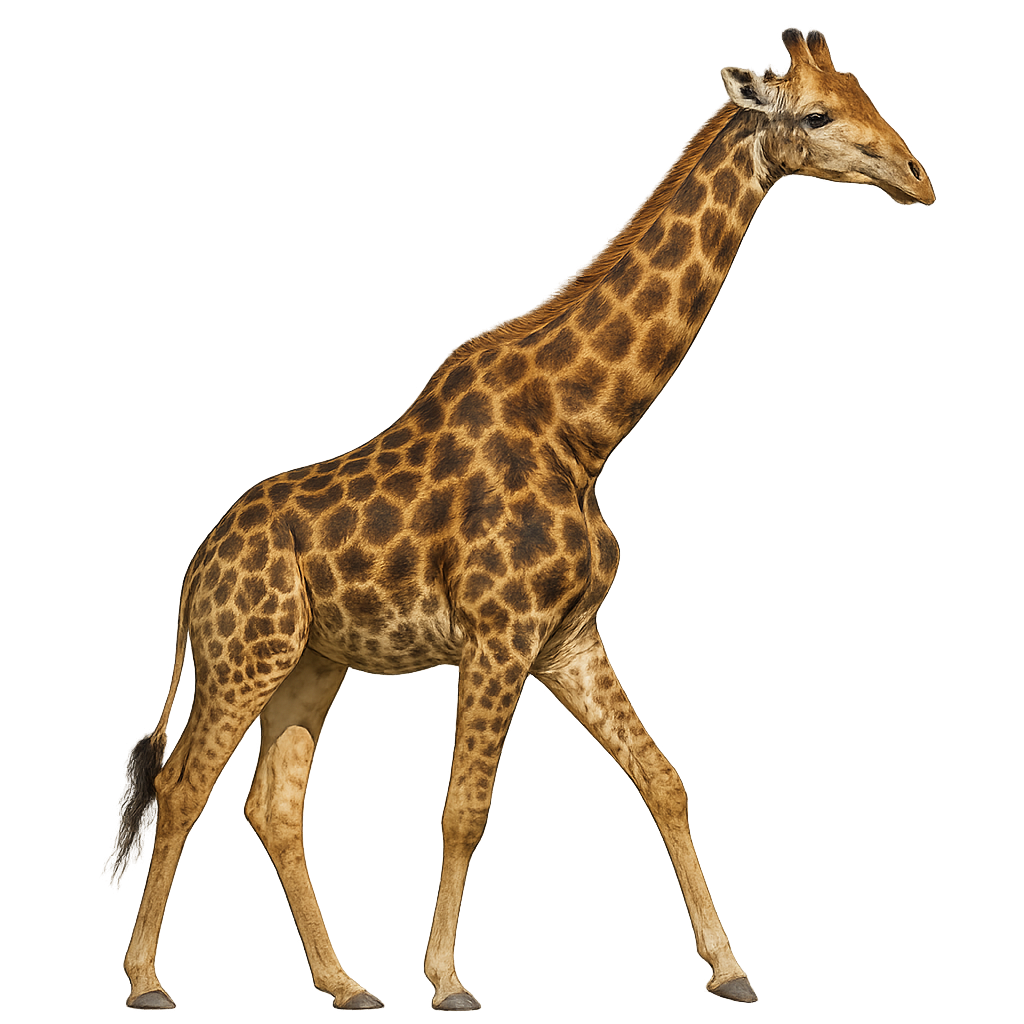Observe and photograph a species in its natural habitat
Learn where and when to observe a species in the wild, how to recognize it in the field, and what habitats it lives in. Get photography tips adapted to its behavior and capture stunning images without disturbing the animal. For full details, open the complete profile in the WildlifePhotographer app.
Southern Giraffe
Scientific name: Girafe giraffa

IUCN Status: Vulnerable
Family: GIRAFFIDAE
Group: Mammals
Shyness: Suspicious
Safe distance: 110 m
Breeding season / Courtship: 01.01-31.12
Gestation: 15 mois
Births: 01.01-31.12
Habitat:
Savanna and grassy areas
Description:
The Southern Giraffe is a subspecies of giraffe, characterized by its slender body, long neck, and robust legs. It typically stands between 4.3 and 4.8 meters tall, with males being larger and heavier than females, weighing between 800 and 1,200 kg. Its coat is light brown to beige, with irregular darker patches that are bordered by white. The patches of the Southern Giraffe are larger and more spaced out than those of other subspecies, giving it a distinctive pattern. It primarily inhabits the savannas and woodlands of southern Africa, notably in South Africa, Namibia, Botswana, and Zimbabwe. Herbivorous, it feeds primarily on acacia leaves, berries, and fruits, which it reaches with its long neck and prehensile tongue. While the species is currently less threatened than other giraffe subspecies, the Southern Giraffe faces risks related to habitat loss and population fragmentation.
Recommended lens:
>=70-200 mm
Photography tips:
Approach slowly and quietly, using a telephoto lens to capture images from a distance. Although they’re large and visible, southern giraffes can be sensitive to human approach.
Photograph early in the morning or late in the afternoon, when soft light highlights their movement and silhouette across the savannah.
Watch for natural behaviors—feeding on acacia leaves, walking in herds, or resting in open areas. These moments offer great photo opportunities.
Be patient and respectful—keep your distance to avoid disturbing their natural rhythm.
IUCN status: Vulnerable. Respect their habitat and follow local conservation guidelines.
Ready to take action?
Choose your platform and start your free trial today



